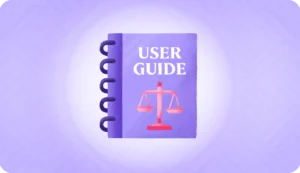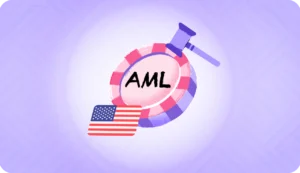Remember the “P. Sherman, 42 Wallaby Way, Sydney.” from Finding Nemo? or ” The cupboard under the Stairs, 4, Privet Drive, Little Whinging, Surrey” from Harry Potter?
These addresses are memorable not because of their street names, but because they gave identity to a story. In the real world, though, your address is more than a plot device. It’s how institutions verify that you are real.
In India, proof of address is a mandatory requirement for KYC (Know Your Customer) compliance under RBI and UIDAI guidelines. It enables businesses and financial institutions to confirm where an individual resides, helping prevent identity fraud, support anti-money-laundering efforts, and ensure their services are used responsibly.
In this blog, we’ll cover everything you need to know about proof of address, from the verification process and list of acceptable documents to best practices for staying compliant. Feel free to skip ahead to the section that’s most relevant to you.
What is Proof of Address (PoA)?
Proof of Address (PoA) is an official document that verifies the residential address of an individual. It is a key requirement in various administrative and financial processes, serving as a means to confirm that a person resides at the location they claim. This is particularly important for compliance with Know Your Customer (KYC) regulations, preventing fraud, and ensuring accurate delivery of services and goods.
In India, Proof of Address is part of KYC norms mandated by the Reserve Bank of India (RBI) and the Prevention of Money Laundering Act (PMLA), ensuring that financial institutions verify customer identity and residence to curb money laundering and other illicit activities.
Proof of Address vs Proof of Residence
They’re often used interchangeably, but there’s a small difference. Proof of Address refers to documents that show where you receive official communication, like utility bills, bank statements, or government letters. It mainly confirms the address that’s linked to your identity or where you can be contacted.
Proof of Residence, on the other hand, focuses on where you actually live. It’s used to confirm your physical presence at a specific location, usually through documents like property agreements, rent receipts, or official verification records. In many cases, both can overlap, but some institutions or embassies might ask for one specifically depending on what they need to verify.
Why Is Proof of Address Important?
Proof of Address plays a crucial role across financial, legal, and administrative systems in India. It’s what allows institutions to confirm that customers are who they say they are and that they reside where they claim to.
KYC & AML Compliance (RBI, SEBI, IRDAI)
Every regulated entity in India—whether it’s a bank, broker, or insurer—is bound by the KYC and Anti-Money Laundering (AML) rules laid down by regulators like RBI, SEBI, and IRDAI. Proof of Address is part of this due diligence. It helps prevent identity fraud, track the flow of funds, and ensure the customer truly resides at the declared location.
Customer Onboarding Accuracy
When customers share a valid address proof, it reduces the chances of errors or mismatched information during onboarding. This means faster approvals, smoother communication, and fewer delivery failures for critical documents like debit cards, investment statements, or policy papers.
Fraud Prevention & Regulatory Audits
Address verification acts as a safeguard against fraudulent activities such as multiple accounts under fake identities. It also helps institutions maintain a clear audit trail—something regulators regularly check to confirm compliance with KYC norms.
Legal Notices & Documentation Service
Finally, a verified address ensures that legal notices, contracts, and official documents reach the right person at the right place. In any dispute or claim process, this verification often becomes the deciding factor in proving accountability and timely communication.
Legal & Regulatory Basis for Address Verification in India
PoA is a regulatory mandate governed by multiple Indian authorities.
- UIDAI (Unique Identification Authority of India):
Maintains the List of Supporting Documents for Aadhaar Enrolment and Update, which includes government-issued documents such as passports, voter IDs, and utility bills as valid Proof of Address. - RBI (Reserve Bank of India):
Under the Master Direction – Know Your Customer (KYC) (updated 2025), regulated entities must collect Officially Valid Documents (OVDs) as PoA, such as passports, driving licences, Aadhaar, NREGA cards, and other prescribed documents. - SEBI / Mutual Funds / Banks:
The CKYC (Central KYC Registry) and KRA (KYC Registration Agency) frameworks require intermediaries to verify address details against valid PoA documents during onboarding and updates, ensuring uniformity across banks, NBFCs, and mutual funds.
Together, these frameworks ensure that address verification in India meets both legal and operational standards and form the foundation of identity verification, AML compliance, and risk management practices across the BFSI ecosystem.
What Are Acceptable Proof of Address Documents (Officially Valid Documents or OVDs)?
Under the Reserve Bank of India’s Master Direction, only specific documents are recognized as Officially Valid Documents (OVDs) for verifying an individual’s identity and address. These must clearly display the individual’s full name, recent photograph, and current residential address.
RBI-Recognized Officially Valid Documents (OVDs)
The following six documents are considered valid proof of address across banks, NBFCs, and other regulated entities:
- Passport
- Driving Licence
- Voter’s Identity Card (EPIC)
- Aadhaar Card / e-Aadhaar
- NREGA Job Card (issued by a State Government officer)
- Letter issued by the National Population Register (NPR) containing name and address details
These OVDs are universally accepted for KYC and customer onboarding in compliance with the Prevention of Money Laundering Act (PMLA), 2002.
Deemed or Supplementary Proofs (Accepted Under Certain Conditions)
In cases where the customer’s current address differs from that on the OVD, or for low-risk accounts, entities may rely on “deemed OVDs” or supplementary proofs as per RBI provisions.
These must typically be recent (within 3 months) and include:
- Utility bills – electricity, gas, water, broadband, or telephone
- Bank account or post-office passbook statements (latest 3 months)
- Property tax receipt or registered rent / lease agreement
- Letter from employer, public authority, or recognized educational institution
- Insurance policy or premium statement
💡 Note: Always ensure the document date, signatory, and address details are consistent and legible before submission. Expired, unsigned, or mismatched documents are liable to be rejected during KYC verification.
Address Verification Process (Step-by-Step)
Address verification today combines AI automation and regulatory compliance to ensure that customer data is both accurate and authentic.
Here’s a typical four-step process used by regulated entities in 2025:
- Collection: The customer uploads or captures their proof of address document (utility bill, Aadhaar, etc.) via a secure onboarding flow.
- Data Extraction: AI-powered OCR reads the address fields in real time. HyperVerge’s multilingual OCR can interpret 10+ Indian languages and formats accurately.
- Verification & Validation:
- Pincode and locality are auto-validated through India Post APIs.
- Address strings are normalized to the official India Post standard format.
- Optional: a manual reviewer or AI-based confidence scoring validates unclear fields.
- Pincode and locality are auto-validated through India Post APIs.
- Confirmation: The verified address is logged and tagged as “Active PoA,” with audit trails available for KYC or AML reviews.
We’ve already broken down how we handle even the toughest edge cases in address matching across India, but in short: HyperVerge’s AI does most of the heavy lifting.
It can instantly read address documents in different Indian languages, verify pincodes directly from India Post, and tidy up addresses so they follow the right format. That means less manual work, fewer mistakes, and much smoother onboarding.
Document Validation Criteria
To qualify as a valid Proof of Address, a document must meet the following standards:
- Recent – Dated within the last 3–6 months, showing the latest residence details.
- Authentic Format – Must be an original or certified copy, free from alteration.
- Clear Issuance Details – Displays date, issuer name, and signature or seal.
- Accurate Address Elements – Includes door number, street, locality, city, state, and postal code.
- Readable Language – Multilingual documents are accepted, though English versions help speed up automated verification.
Common Challenges & Rejection Reasons
Verifying PoA often runs into several challenges that can lead to delays or outright rejections. Here are the most common issues businesses and users face during the address verification process:
1. Lack of Clarity
Many proof of address documents are scanned or photographed poorly, making them hard to read. Blurred text, missing corners, or spelling errors in names and addresses can all make it difficult to confirm whether the address truly belongs to the applicant.
2. Disparity in Document Formats
Accepted PoA documents vary widely across regions and institutions from utility bills to property tax receipts. For companies handling verifications across multiple states or countries, this inconsistency in format and layout can cause confusion and slow down the verification process.
3. Mismatch Between Aadhaar and Submitted Document Address
One of the most common rejection reasons today is a mismatch between the address on the Aadhaar database and the one mentioned on the submitted document. Even minor variations in spelling or formatting (like “Road” vs “Rd.”) can trigger a flag during automated checks.
4. Outdated Proof of Address
Certain organizations require address documents to be recent typically issued within the last 3–6 months. Submitting older documents such as outdated utility bills or expired rental agreements often leads to rejection.
5. Lack of Trusted Signatories
Physical documents such as employer or government-issued letters depend on the credibility of the signatory. If the issuing authority is unrecognized or lacks a verifiable seal, the proof may be considered invalid.
6. Language or Translation Issues
When documents are issued in a regional or foreign language, or mix multiple languages, verifiers may struggle to interpret them accurately. In such cases, certified translations are often required, adding extra cost and turnaround time.
How HyperVerge Accelerates Address Verification
HyperVerge’s AI-powered OCR technology streamlines proof of address verification by instantly scanning and extracting data from documents in real time. It minimizes errors by accurately recognizing addresses across diverse formats, layouts, and languages — even in low-quality or distorted images.
Continuously trained on millions of real-world samples, our OCR engine ensures high accuracy while reducing false positives and manual interventions. For businesses, this translates into faster onboarding, stronger fraud prevention, and greater operational efficiency.
Key capabilities:
- No-code workflow builder for custom PoA flows
- Auto-approval up to 95% through fallback AI checks
- Seamless integration with your existing KYC stack via API
Our AI OCR verifies address documents in under 2 seconds with >99% accuracy across 50+ document formats and 20+ Indian languages.
Future of Address Verification: Digital Address Code (DAC / DIGIPIN)
India is on the cusp of a major transformation in how residential and business addresses are identified and verified. The Digital Address Code (DAC), also referred to as DIGIPIN, is an upcoming initiative by India Post and the Ministry of Communications & Information Technology (MoCIT) to assign every address in the country a unique, standardized digital code, similar to how Aadhaar uniquely identifies individuals.
Each DAC will represent a specific physical address, geotagged, authenticated, and linked to national databases, enabling instant and accurate address validation across sectors. Once implemented, this system will simplify PoA verification for banks, NBFCs, telecom operators, and e-governance platforms by eliminating inconsistencies and errors that arise from manual address entry or document-based proofs.
By providing a single source of truth for all address-related information, the DAC can also help curb identity fraud, duplicate records, and false address claims, which remain persistent challenges in KYC and onboarding workflows today.
As India moves toward a unified Digital Address Code, AI-powered verification systems like HyperVerge will play a pivotal role in helping organizations adapt to this new framework by integrating digital address APIs, mapping DACs to existing customer databases, and ensuring seamless compliance with evolving PoA standards.
Ready to experience smart address verification? See HyperVerge in action now.





